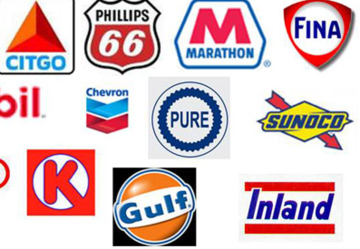Torco Oil
Brand
Every company has a beginning. Before Torco, there was Bob Lancaster---the inventor of the first 20W-50 racing oil. He made this free flowing SAE 50 motor oil in 1948---long before the Society of Automotive Engineers identified this viscosity grade as SAE 20W-50.
Racers of that time soon discovered that stock motor oils weren't good enough for modified racing engines.The stress of high speed in a hot running engine, cooled only by hot desert air, caused ordinary motor oil to become sizzling hot and extremely thin.
Subject ID: 12501
MoreEvery company has a beginning. Before Torco, there was Bob Lancaster---the inventor of the first 20W-50 racing oil. He made this free flowing SAE 50 motor oil in 1948---long before the Society of Automotive Engineers identified this viscosity grade as SAE 20W-50.
Racers of that time soon discovered that stock motor oils weren't good enough for modified racing engines.The stress of high speed in a hot running engine, cooled only by hot desert air, caused ordinary motor oil to become sizzling hot and extremely thin.
Motor oils of that day were single grade mineral oils with a strong preference towards paraffin-based blending stocks. The best of these were 100% pure Pennsylvania oils that were supposed to be the world's finest.
Racers used SAE 50 motor oil because it maintained oil pressure at high temperature. The oil industry used bright stock to make SAE 50 motor oils. Lancaster wanted to eliminate the use of bright stock and take a different approach in making SAE 50 motor oil. He contacted Enjay Chemical for a sample of polymer they recommended for increasing the high temperature viscosity of low viscosity base oil. He chose a highly refined SAE 20 base oil that bordered the viscosity of SAE 30, and boosted its viscosity high into the SAE 50 range, with the Enjay polymer. The treated oil was clean and clear to look at, and slippery. Lancaster had been warned that highly refine-based oils were inferior lubricants because over refining removed the components that cause natural oiliness. He would, however, find a way to improve lubrication by adding anti-wear additives. Lancaster had contacted Monsanto Chemical for samples of their oil soluble zinc anti-wear additives. He received two types: alkyl and aryl dithiophosphate. Since the alkyl variety offered a higher degree of wear protection and the aryl variety offered more effective protection against oil oxidation (thermal breakdown), he decided to use both. The result in 1948 was 20W-50 racing oil.
Subject ID: 12501
Subject ID: 12501
